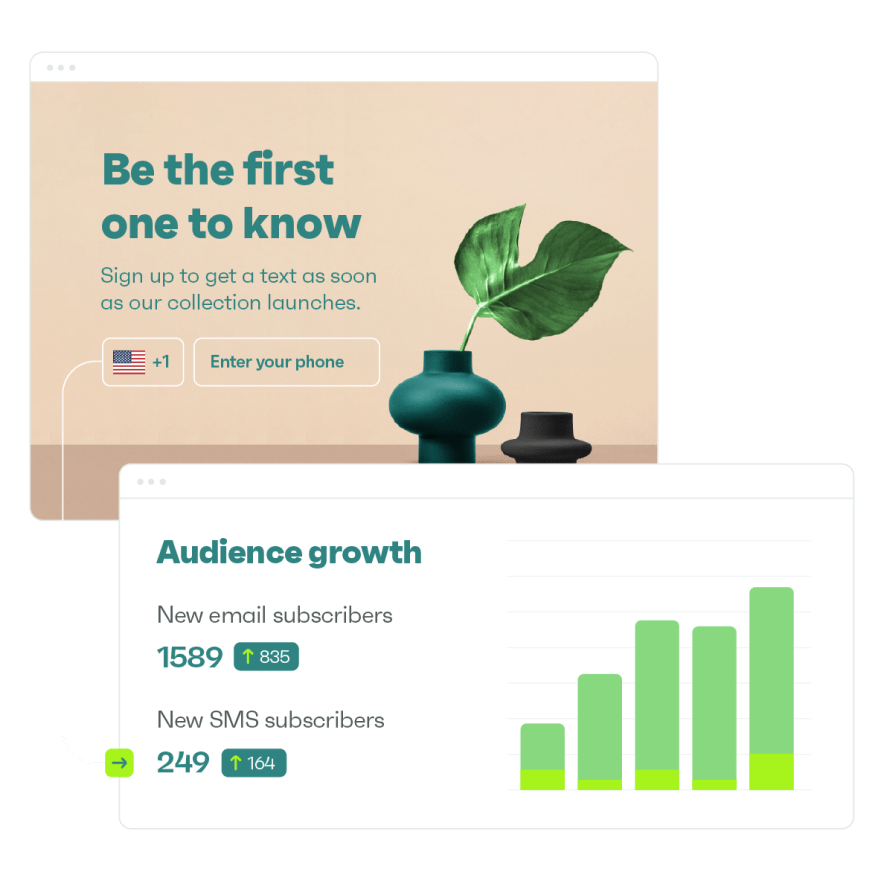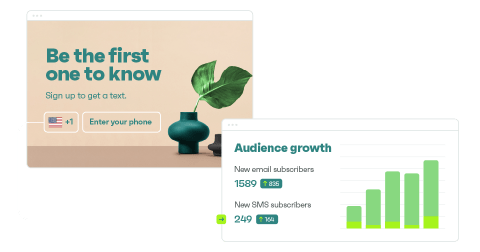Drive sales on autopilot with ecommerce-focused features
See FeaturesHow to Use Data-Driven Customer Retention to Grow Revenue
It’s no secret that your existing customers are your best customers. This isn’t to say that you shouldn’t focus on acquisition. However, every ecommerce merchant reaches a tipping point where it makes more sense to focus on retention.
Of course, creating a customer retention strategy is easier said than done—unless you have data to back it up.
In this piece, we’ll cover what it means to create a data-driven customer retention strategy. We’ll explore how to identify your best customers and what actionable steps to take next to keep them coming back for more.
Get started retaining more customers through always relevant messaging that takes minutes to set up. Try Omnisend for free today!
Why Data-Driven Customer Retention Matters
You want new customers, right? Of course—but the real value lies in retaining the customers you already have. There are three main benefits to focusing on data-driven customer retention.
Existing Customers Spend More
It’s no secret that your most valuable customers are your existing ones. In recent years, this fact has only become more reinforced—customers are more loyal than ever once you do what it takes to earn that loyalty.
In 2020, 56% of customers said they’d be willing to spend more with a brand they’re loyal to even if there were cheaper options available elsewhere.
Existing Customers Are Cheaper to Convert
By simply providing a great customer experience, loyal customers cost far less to convert than newer ones. In fact, 65% of US customers say a positive experience with a brand is incredibly influential. Far more influential, in fact, that it improves their likelihood of repurchasing more so than great advertising.
Existing Customers Provide Growth
Customer retention is a tried-and-true revenue driver for nearly any business for that reason. This year, we’re seeing more ecommerce businesses focusing on customer retention as part of their core strategy. This is instead of acquisition—and the choice is a smart one.
According to the 2020-2021 Gartner CMO Spend Survey, 79% of CMOs say that they’ll rely on existing customers for post-pandemic recovery in 2021.
Ewan McIntyre, VP Analyst at Gartner, states that your most loyal existing customers will be the ones responsible for growth this year:
“Adopt value segmentation to ensure that your focus for growth in 2021 is on the most profitable customers. Build a balanced portfolio strategy, ensuring that safer bets such as servicing existing customers and driving repeat purchases are counterbalanced by more transformative options.”
McIntyre makes a great point about value segmentation—customer retention strategies are best when you back them up with the data you collect on your customers and their shopping habits.
How to Evaluate Customer Retention Using Data
What is customer retention if not data-driven? The data you collect on your customers is your greatest ally in creating a customer retention strategy. And this includes the way they interact with your store.
Implementing a data-driven customer retention strategy first requires analysis. A customer retention analysis can be a bit tricky to pin down. Mainly because any calculation you perform is merely a snapshot of a certain time period. On the other hand, customer retention is a rolling metric that changes over time.
First, you’ll need to determine your customer retention model. The simplest method is to decide on a time frame, such as a year, and measure retention over the course of that year.
From there, you’ll need to answer a few questions:
- How many customers did you have at the beginning of that year?
- How many customers do you have now?
- How many customers did you acquire over that year?
From there, your customer retention rate will come down to a simple calculation:
- The number of current customers.
- Subtract the number of customers you acquired over the year.
- Divide by the number of customers you had at the beginning of the year.
It would look something like this:
(Current # of Customers – New Customers) / # of Customers at Beginning of Year
For example, you have 100 customers at the beginning of the previous year. Now you have 150 customers, with 75 of them being new customers, your formula would look like this:
(150-75) / 100 = 0.75
Then, as with any rate formula, simply multiplying the number by 100 will give you your 75% customer retention rate. For example, you could reduce the time frame to quarters. This way, you’d see your short-term customer retention rate, if that makes sense for the kinds of products you sell.
The issue with this calculation is that it’s merely a still-frame in an otherwise motion picture that customer retention is. The question is, what can you do to handle this problem?
How to Improve Your Customer Retention Rate: The Lifecycle Map
Ultimately, by understanding the Lifecycle Stages map, you can solve this problem. It does so by giving you actionable information on what to do next.
You can find the Lifecycle map by going to Audience > Customer breakdown.
With the Lifecycle map, Omnisend takes the headache out of performing an RFM Analysis. It helps identify which of your customers are your champions, which you’re at risk of losing, and which you can afford to let go.
Omnisend even provides retention tactics and recommendations for each of these different lifecycles—taking the guesswork out of what to do next. These different lifecycle segments are automatically generated, making the next steps even easier.
From here, you’ll know exactly what lifecycle segment to use, and what kind of automation workflow or campaign to set up for them.
Lifecycle Workflows that Promote Data-Driven Customer Retention
Each of these different lifecycle stages has a specific message they need during this step of their customer journey. To retain them long term, consider the following workflows for each step:
Recent Customers
You should cherish recent customers. Have timely updates with order and shipping confirmation workflows in place. Implement a follow-up with any product tips or care instructions. Afterward, automatically join these customers to personalized product recommendation workflows for cross-selling opportunities.
Loyalists
Loyalists are your most devoted customers. Using personalized product recommendations workflows based on previous purchases will make them 2.6 times more likely to reconvert. Consider inviting them to your loyalty program to reward their loyalty.
Champions
Your champion customers are your VIPs. Give them exclusive rewards and early access to new product launches. Reward them often and well, these are the best of the best—you should treat them accordingly.
Need Nurturing
Customers who need nurturing have potential but haven’t purchased recently. Bring them back into the fold with personalized recommendations. Or, offer bundled deals to increase average order value.
High Potential
For high-potential customers, use more immediate channels that will grab their attention. For example, incorporating SMS or push notifications into your cross-sell workflow. Keep them engaged by reaching out regularly via email with offers that are relevant to their interests.
At Risk
For at-risk customers, those who you’re at risk of losing, it’s important to reactivate them. Put into place a reactivation or lapsed-purchaser workflow. Include a good mix of personalized product recommendations, plus a few new fan-favorites they’re sure to love. Don’t go too overboard with discounts, instead create urgency with limited-time offers.
Can’t Lose
Unlike at-risk customers, can’t-lose customers haven’t been active recently but purchased more often or spent more when they were. For these customers, go for a bigger discount to sweeten the incentive of coming back. You can also combine your lapsed purchaser workflow with a few Google and Facebook retargeting ads to keep your brand top-of-mind.
About to Lose
These are customers who haven’t purchased in some time and might have completely churned already. For these customers, send a reactivation campaign and unsubscribe any customer that didn’t open the campaign. You can also use this opportunity to invite customers to update their subscription preferences. This way, they can determine exactly what and how many emails they receive.
Takeaways
No matter what stage your customer is in, there is a data-driven customer retention strategy that’s right for them. The pitfall that many ecommerce merchants fall into is not knowing what to do with the data they’ve collected.
Create messaging that keeps customers coming back by using data-driven customer retention strategies. They help improve your customer lifetime value, your average order value, and increase your revenue in the long run.
Processing and dealing with this data doesn’t have to be difficult. The Lifecycle map makes handling data simple. By using the tools Omnisend’s dashboard offers, you’ll have actionable insights into what steps to take next—all without increasing your workload. Try it out for yourself for free today!
TABLE OF CONTENTS
No fluff, no spam, no corporate filler. Just a friendly letter, twice a month.
What’s next



